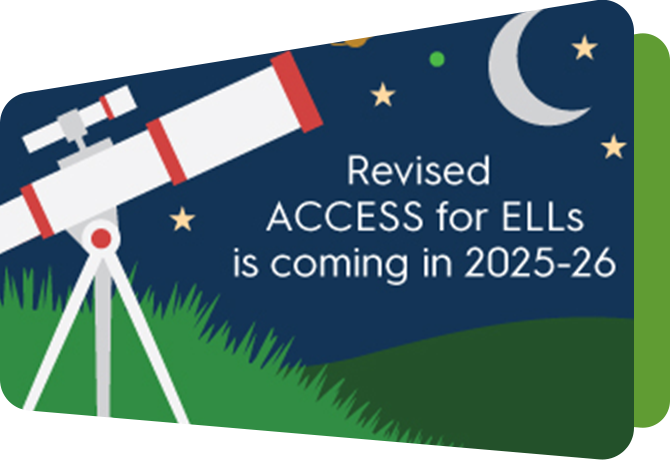January 2021 Featured Educator: HeeGyoung Song

Maintaining a 95 percent daily attendance is a feat in any classroom, let alone a virtual one, but this month’s Featured Educator found a way to do it. She keeps her students excited about and involved in their learning, even during the pandemic.
It comes as no surprise then that HeeGyoung Song, this month’s Featured Educator, is passionate about her own learning habits and sharing what she learns with her students.
It probably helps that, as she puts it, “I can’t sit back and relax. I continue to train myself to be a good teacher for my students who are going to be change agents and make a difference in the world.”
HeeGyoung has been working with students and their families and communities for more than a decade. Today, she teaches English language learners (ELLs) at Warford Elementary School in Kansas City, Missouri. And she is a part time instructor at universities, teaching advanced teacher education courses.
Warford Elementary School is in the Hickman Mills C-1 School District – the first consolidated school district in Missouri. According to HeeGyoung, the ethnic diversity in Hickman Mills is reflective of the community. About 69 percent of students are African American, 13 percent are Hispanic, 9 percent are white and 9 percent identify as other.
“Every day I see and experience the challenges that arise from real differences in language, class, race and ethnicity, exceptionality, and cultures for students and teachers,” HeeGyoung said. “I have learned that the collaboration of students, their parents, their teachers and school administrators is essential to providing an equitable learning environment and education for all students in the urban core.”
As a Korean immigrant, HeeGyoung said she chose to pursue a career in teaching to try to make a difference in every student’s life by helping them recognize their abilities and use those abilities to build their lives in collaboration with her and their peers.
Collaboration is key to HeeGyoung’s teaching practice. She first starts with building relationships with her students’ families.
“Understanding and respecting their culture and different aspects of nonverbal communication allows me to better communicate and interact with parents of ELLs and the ELLs themselves,” HeeGyoung said. “Right now, even in my Zoom room, my students and I use lots of hand gestures and verbal and written expressions to communicate how much we care for each other.”
In addition to using strategy tools like collaboration and different styles of communication, HeeGyoung and a colleague published the strategies they have found to be effective at meeting the content and language needs of ELLs:
- Use non-fiction texts
- Embrace choice, interests, and learner/teacher autonomy
- Ask questions relevant to the children’s lives
- Include socialization and information sharing
- Read aloud daily with K-6 students
- Engage families
“I scaffold students so they can reach the next level of their language development and content learning by using lots of visuals, pictures, images, gestures and modeling," HeeGyoung said. “I try hard to make content comprehensible by finding appropriate and fun stories together with my ELLs. We laugh a lot even on Zoom. The parents of the young students participate on Zoom with their child/children, and we laugh together celebrating success, even small progress.”
Another language development tool HeeGyoung uses is the WIDA English Language Development Standards Framework.
“I use the standards to promote and guide my ELLs’ language development,” HeeGyoung said. “They are also used to aid in the development of lesson plans, instruction and assessment. I make sure that academic language, content vocabulary and content knowledge in language arts, math, science and social studies are included in my lesson plans and are practiced by doing activities with my students.”
During the pandemic, HeeGyoung continues to rely on her tried-and-true teaching methods while incorporating new techniques that help with virtual teaching and learning. Here she shares what’s been working:
- I use non-fiction texts from Scholastic News and Science Spin. Before ELLs read the articles, they watch a video that is related to the article and discuss what they learned from the video. Then, they study 3-5 new content words from the story. All students have an opportunity to pronounce each word, read the definition of each word and write down new words with definitions. When they are done writing, they show their journal and/or give a thumbs up.
- Instead of simply delivering content and following pacing guides, I use students’ interests to find resources and readings which allow them to be engaged in learning from me and from their peers. I always ask the why questions, challenging them to think about how they are going to implement what they are learning in their life to solve the problems they are facing.
- Some beginners and students who receive special education services as well as English language services attend my virtual class with their parents and/or siblings. Their family helps them learn and engage in learning in my Zoom class.
- Family engagement is one thing that I really care about. Although I do not speak all the languages my ELLs and the parents of my ELLs speak at home, I have effective strategies that I can use to communicate with their parents. I use lots of visuals, gestures and student work samples to show them how their student is progressing linguistically and academically. I try to solve any problems my ELLs are facing collectively and collaboratively. Parents, administrators, the counselor, the family resource specialist, the attendance clerk, the school secretary, my Spanish translator and the English to Speakers of Other Languages lead teacher should all have a part in solving the problems. I try to communicate with all the stakeholders daily – especially during the pandemic.
“My English Language Learners bring so much knowledge to my classroom,” HeeGyoung said. “I am very humbled and honored to work with them.”





